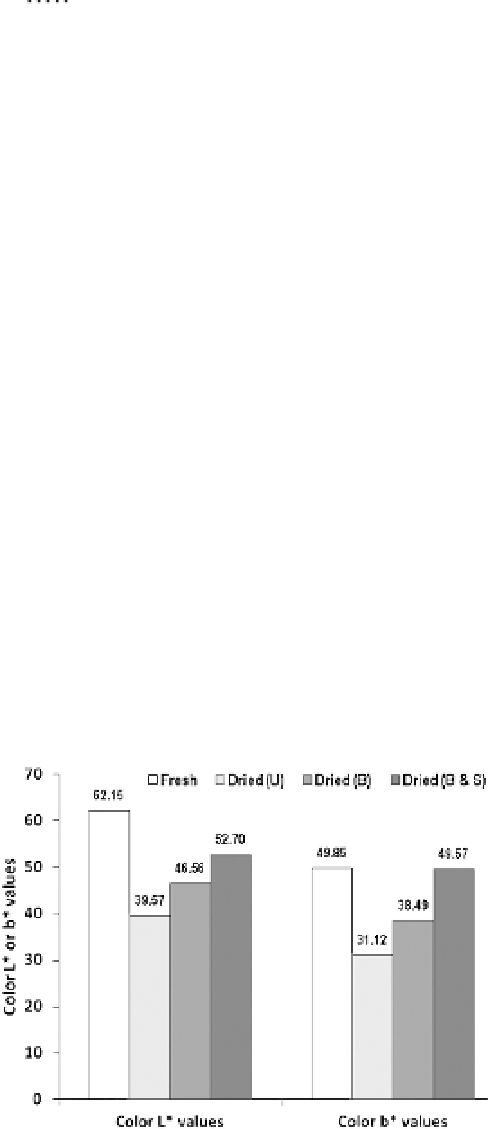Agriculture Reference
In-Depth Information
3
a
b
2.5
a
Untreated
Blanched
Blanched & Sulfited
b
b
a
2
b
b
1.5
b
a
a
1
a
b
a
a
b
b
0.5
c
b
b
c
c
c
0
0
5
10
15
20
25
Drying time (h)
30
35
40
45
50
55
Figure 24.4.
Effect of different pretreatments on the drying kinetics of figs (moisture content vs. drying time)
(source: Piga et al., 2004).
product with high organoleptic quality. However, the pro-
cess was associated with significant loss of ascorbic acid
(Piga et al., 2004). It was demonstrated that pretreatments,
1 min blanching in water, and 3% K
2
S
2
O
5
(sulfiting) dip
reduced drying time significantly (
Packaging in plastic films is a common practice for dried
figs. The effect of sophisticated packaging methods on
keeping quality of dried figs was studied by Meyvaci et al.
(2003a). Vacuum packaging had a negative effect on the
product quality due to enhanced exudation and fig darken-
ing. Storage in modified atmosphere (20% CO
2
+
33-37 hours as com-
pared to about 54 hours for untreated fruit) (Fig. 24.4). The
color quality parameters of the pretreated dried figs were
also better than those of the untreated fruit (Piga et al.,
2004); color L
∗
values, which depict “lightness” improved
significantly, whereas color b
∗
values of pretreated dried
figs were similar to the fresh figs (Fig. 24.5).
∼
80% N
2
)
slowed the darkening of dried figs at ambient temperature
as compared to air or N
2
atmospheres.
Keeping quality of high-moisture rehydrated figs varied
in different years and could be maintained for the periods
Osmotic dehydration
An attempt to use osmotic dehydration of figs was reported
by Piga et al. (2008). The authors concluded that whole fig
fruit is not best suited for this technology, probably due to its
morphological and/or anatomical peculiarities. However,
some encouraging results were reported by Flaishman et al.
(2008).
Packaging and storage of dried figs
Dried figs are shelf-stable and may be stored under nonre-
frigerated conditions without any significant loss of quality
for about 6 months. Still, reduced temperature and interme-
diate humidity (4
◦
C and 55-65% RH) were preferred as the
ideal environment for storing dried figs (Ural, 1997). Cold
storage allowed product preservation beyond 6 months
(Meyvaci et al., 2003a; Gawade and Waskar, 2005).
Figure 24.5.
Effect of different pretreatments on
color values L
∗
and b
∗
of dried figs (U, untreated;
B, blanched in water for 1 min; B & S, blanched and
sulfited, 3% K
2
S
2
O
5
) (source: Adapted from Piga
et al., 2004).

























Search WWH ::

Custom Search